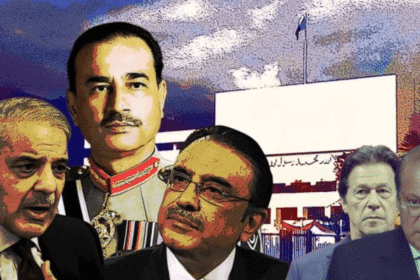In South Asia’s turbulent political landscape, two nations faced defining moments in the span of a year — but their people responded in strikingly different ways to those events. In Bangladesh, students led one of the most significant protest movements in a generation after the government revived a controversial quota system that secured a much greater number of civil service jobs for descendants of 1971 war veterans — a policy widely viewed as unfair and exclusionary. The protests swelled into a national movement and successfully compelled their government to back down. However, in Pakistan, an allegedly rigged election and a punishing 2025 budget were passed without mass mobilisation and national solidarity. The contrast is stark — and troubling. That is why young people in one country rose for justice while those in the other remained silent. This contrast not only highlights the story of protests for justice in both countries but also reveals how fear, repression, class, and fatigue shape people’s beliefs about whether resistance is possible — or pointless. By understanding this divergence, we can uncover the deeper forces that either fuel or fracture collective action.
In early 2024, Pakistan held general elections that many observers and citizens now describe as manipulated. Reports of pre-poll rigging, delays in vote counting, media blackouts, and voter suppression have cast serious doubts about the fairness of the electoral process. Disturbingly, videos circulated widely online on election day and in the days that followed appeared to show tampering with vote bags, ballot stuffing, and unauthorised access to polling stations—further fuelling public suspicion. Moreover, in the early hours of counting, independent candidates backed by the Pakistan Tehreek-e-Insaf (PTI) were reportedly leading in over 125 constituencies with significant margins. Yet by morning, many of these results had reversed because leads of tens of thousands of votes vanished overnight, and the Pakistan Muslim League-Nawaz (PMLN) emerged with a path to form a coalition government with the Pakistan People’s Party (PPP). Adding to the concerns was that some candidates who were declared winners later admitted to receiving “fake victories”, further eroding the credibility of the results. Despite these clear signs of electoral injustice and widespread public discontent, it only sparked frustration across social media, but that anger never translated into organised public action.
This pattern repeated itself when the Pakistani government unveiled its federal budget in June 2025. Instead of offering relief, the budget imposed onerous new burdens on ordinary citizens. As part of these measures, the government reduced overall spending by 7%— from Rs 18.9 trillion last year to Rs 17.57 trillion this year — mainly to meet debt payments. However, at the same time, they increased defence expenditure by nearly 20%, reaching approximately Rs 2.55 trillion, leaving fewer resources for essential public services like education, healthcare, clean water, and infrastructure. Furthermore, despite struggling to achieve past tax collection targets, the government also set an ambitious tax revenue goal of Rs14.1 trillion in this budget — nearly 19% higher than last year. This is likely to harm Pakistani citizens, as any failure to meet the goal may again be recovered through indirect taxation, driving up the cost of necessities.
Although the budget includes modest income tax cuts and slight increases in salaries and pensions, these measures offer little comfort against a projected 7.5% inflation rate — up from 4.7% last year. At the same time, deep cuts to energy subsidies — such as a 13% reduction in power subsidies from Rs1.19 trillion to Rs1.03 trillion and the near elimination of petroleum subsidies from Rs18.4 billion to Rs1.2 billion — will drive up electricity and fuel costs. Eventually, these changes will negatively affect Pakistanis by exposing them to significantly higher living expenses. In addition, the budget discourages solar with new taxes and raises a 10% surcharge on electricity, making power less affordable and clean energy even more challenging to access. Altogether, these choices squeeze ordinary Pakistanis from every side — yet no mass protests followed.
(Data and figures sourced from BeingFiler: “Pakistan Budget 2025–26 – Key Highlights”, available at https://beingfiler.com/pakistan-budget-2025-26-key-highlights/)
By contrast, just across the border in Bangladesh, protests erupted on 1st July 2024 when the government reinstated a quota system that reserved 30% of public sector jobs for descendants of Liberation War veterans who fought in Bangladesh’s war of independence in 1971. According to a DD News article, Bangladeshi students across the country viewed the policy as discriminatory because they argued that it blocked access to employment for the majority of qualified candidates, exacerbated high unemployment rates, and entrenched privilege within an already unequal system, undermining the principles of meritocracy.
What began as campus demonstrations quickly transformed into a national movement, drawing in teachers, workers, and ordinary citizens frustrated by long-standing corruption, inflation, and state control. Instead of dispersing under police pressure and violence, the youth-led protests gained momentum — fuelled by a belief that change was possible. They rejected political divisions and refused to be pacified by partial promises. In the end, sustained mobilisation and national solidarity successfully forced Prime Minister Sheikh Hasina to reduce the quotas and announce her resignation.
The stark difference between Bangladesh’s uprising and Pakistan’s silence shows how deeper forces shape whether people feel a protest is worth it or too dangerous to attempt. In Bangladesh, the unfair quota directly jeopardised young people’s futures, so students rose first. Their outrage spread swiftly because teachers and working families — groups from different social classes — joined too, showing the power of class unity. Many Bangladeshis remembered that they had succeeded in past protests like the Shahbagh Movement (2013) and the Quota Reform Movement (2018) before. Hence, the memories of triumphant protests and the appeal of revolution felt real, giving people the courage to participate in the protest. They shared news widely on social media, used free and independent outlets, and found support from students abroad who amplified their message. Even though the government was strong, it failed to silence the public entirely — it could not manufacture consent or make people believe that antagonism was purposeless. For the Bangladeshis, the hope of success felt stronger than the fear of repression.
In Pakistan, people faced evident wounds, too — from rigged elections to a harsh budget — but years of crackdowns, internet shutdowns, and controlled media blocked people from connecting. Many feared losing their jobs or local help if they protested because local power brokers control who gets work and protection — these patronage networks buy silence in the facade of loyalty. Poorer families who live day to day cannot afford to miss work to join protests because survival comes first. According to The News, one labour advocate explained, “They are forced to work in factories in an atmosphere of fear. If workers raise their voice for their rights, they are fired from their jobs and are not even paid their legal dues.” The need of the hour is for the youth to learn about their rights”. According to a 2016 editorial in Dawn and an Economist article on Dawn, Pakistani leaders often use religion and patriotism to brand protests as unpatriotic, which intimidates people away. Unlike Bangladesh’s student groups, Pakistan’s student unions and civil networks have weakened for decades. Older generations tell the youth that protests accomplish nothing, like earlier fallen protests such as the PTI Azadi March (2014) and Students Solidarity Marches (2018–2019) — fostering cynicism and hopelessness. Above all, Pakistan’s military influence quietly reminds Pakistani citizens that any significant uprising might face force or heavy crackdowns. So, even when people feel rage, they do not see transparent leaders or safe spaces to gather. All these pressures — fear, poverty, controlled media, patronage, hidden military power, religious labelling, broken or banned student groups, and old memories of failed protests — weaken the appeal of revolution and drain hope before it can grow.
So, while Bangladesh’s youth found hope, connection, and exact ways to fight back, Pakistan’s people felt alone, divided by fear and class, and surrounded by barriers that made protest feel meaningless — even though the reasons to advance were just as strong as theirs.
This contrast leaves a central question behind. Bangladesh’s students proved that young people can force the regime to listen — but in Pakistan, the same potential remains locked by fear, disillusionment, and division. With one of the largest youth populations in the world, Pakistan’s youth hold the capability to push for change if they choose to stand together. The real question is: will they?
















